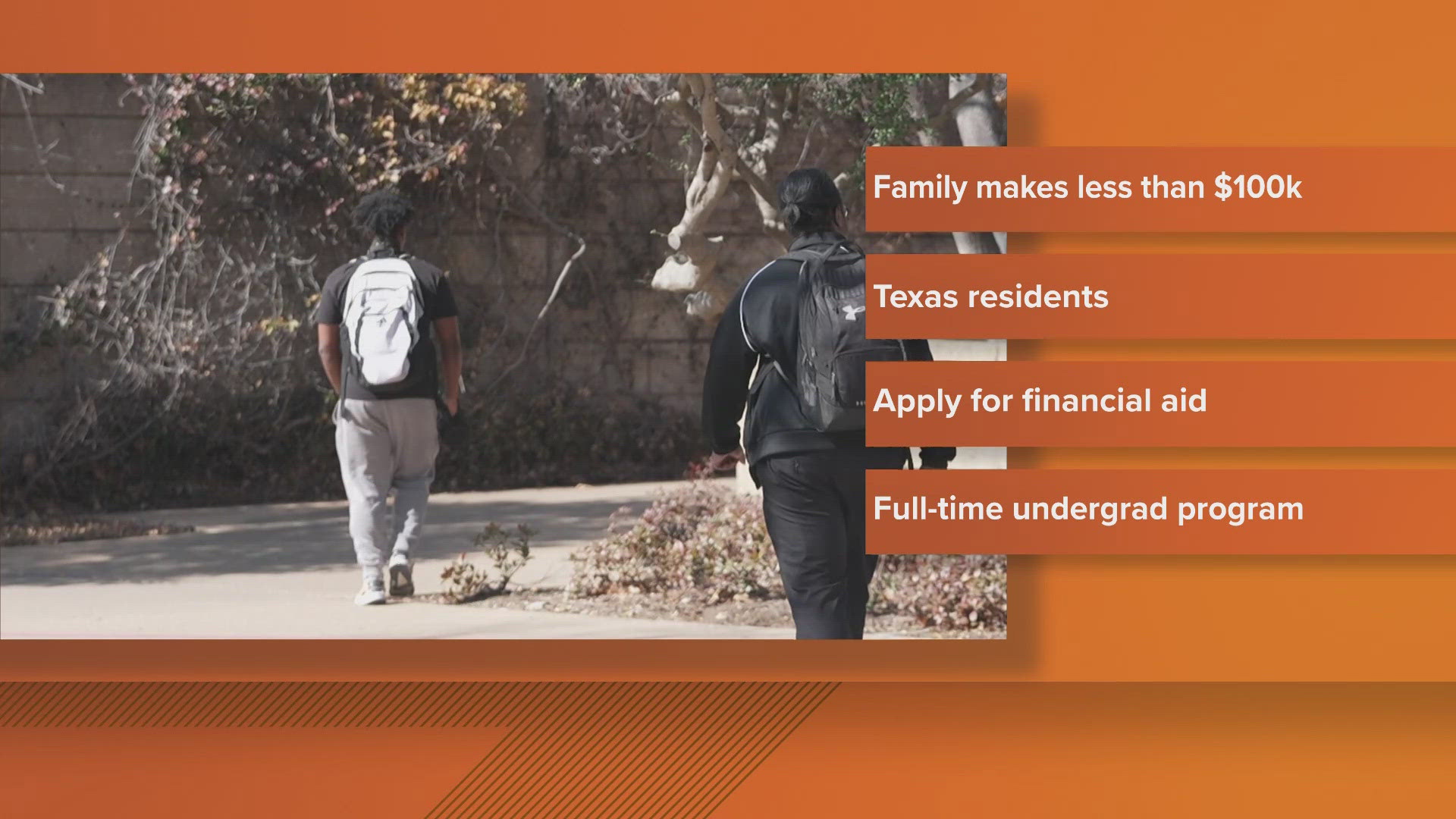AUSTIN, Texas — This story originally appeared in the Texas Tribune.
Texas will fully fund school districts that have seen student attendance drop during the pandemic, as long as they maintain or increase the rate of students learning in person, Gov. Greg Abbott and state education officials announced Thursday.
School superintendents have been awaiting the news for months, with the pandemic and switch to virtual learning causing student enrollment and attendance to drop by more than 150,000 students statewide between January 2019 and 2021. Texas funds its public schools based on the number of students who attend, whether they are learning in person or virtually.
As of this January, 56% of Texas public school students were learning in person.
"As more districts return to in-person instruction, we are ensuring that schools are not financially penalized for declines in attendance due to COVID-19," Abbott said in the release. "Providing a hold harmless for the remainder of the 2020-2021 school year is a crucial part of our state's commitment to supporting our school systems and teachers and getting more students back in the classroom."
School districts will be funded based on the number of students who attended before the pandemic, according to the release. It is not yet clear whether state or federal money will be used to pay for the cost, Texas Education Commissioner Mike Morath told school superintendents on a call Thursday.
The announcement follows two other big developments this week that will impact Texas public education: School staff are now eligible for vaccines, and school boards can opt out of requiring masks on campuses.
State leaders had agreed to fund districts for the first 18 weeks of the academic year based on their projected attendance numbers instead of actual student counts. But as the reprieve neared its end in mid-December, Morath and other state leaders delayed a decision on whether to extend it.
Some lawmakers, including state. Sen. Larry Taylor, argued that extending the reprieve would let school districts off the hook when it came to finding missing students.
Attendance has decreased for a number of reasons, including students moving to different school districts or states, parents not wanting to send younger students to school in grades that are not required, and students working or disengaged during a challenging time.
Many school districts have put a lot of resources into seeking out students who are disengaged during virtual learning, in some cases convincing their parents to send them back in person.
Between October and January, nearly 3,000 students returned to public schools, according to a state survey. The biggest jumps were in pre-K and 11th grade: 4,500 more pre-K students are enrolled in public schools and about 4,900 fewer high school juniors are enrolled.
Morath said districts have multiple ways to earn the additional funding to offset declines in students, including ensuring that on-campus participation rates during the rest of the school year are as high as they were on Oct. 30.
"Many of you are already trending in this direction," he said, acknowledging districts have done a "mad dash" to convince students to return to school.
The Texas Tribune is a nonpartisan, nonprofit media organization that informs Texans — and engages with them – about public policy, politics, government and statewide issues.



